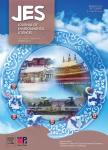Phytotoxicity and groundwater impacts of leaching from thermal treatment residues in roadways
Phytotoxicity and groundwater impacts of leaching from thermal treatment residues in roadways作者机构:State Key Laboratory of Pollution Control & Resource Reuse Tongji University Institute of Waste Treatment and Reclamation Tongji University Centre for the Technology Research and Training on Household Waste in Small Towns & Rural Area Ministry of Housing and Urban-Rural Development of PR China (MOHURD)
出 版 物:《Journal of Environmental Sciences》 (环境科学学报(英文版))
年 卷 期:2018年第30卷第1期
页 面:58-67页
核心收录:
学科分类:083002[工学-环境工程] 0830[工学-环境科学与工程(可授工学、理学、农学学位)] 08[工学]
基 金:supported by the National Basic Research Program (973) of China (No. 2011CB201500) the National Natural Science Foundation of China (No. 21277096) the Collaborative Innovation Center for Regional Environmental Quality the China Scholarship Council (CSC), Ministry of Education, China (No. 2011GXZT67)
主 题:Thermal treatment residues Bottom ash Flue gas desulfurization residue Heavy metals Phytotoxicity Groundwater impact
摘 要:The use of coal fly ash(CFA), municipal solid waste incinerator bottom ash(MSWIBA) and flue gas desulfurization residue(FGDR) in road construction has become very common owing to its economical advantages. However, these residues may contain toxic constituents that pose an environmental risk if they leach out and flow through the soil, surface water and ***, it is necessary to assess the ecotoxicity and groundwater impact of these residues before decisions can be made regarding their utilization for road construction. In this study,the physico-chemical characteristics, leaching and phytotoxicity of these residues were investigated. Specifically, multivariate analyses were used to evaluate the contributions of the leaching constituents of the CFA, MSWIBA and FGDR leachates to the germination index of wheat seeds. B, Ba, Cr, Cu, Fe and Pb were found to be more toxic to the wheat seeds than the other heavy metals. Furthermore, the leached concentrations of the constituents from the CFA, MSWIBA and FGDR were below the regulatory threshold limits of the Chinese identification standard for hazardous wastes. Analyses conducted using a numerical groundwater model(Wisc LEACH) indicated that the predicted field concentrations of metals from the CFA, MSWIBA and FGDR increased with time up to about 30 years at the point of compliance, then decreased with time and distance. Overall, this study demonstrated that the risks resulting from MSWIBA, CFA and FGDR leaching could be assessed before its utilization for road construction, providing crucial information for the adoption of these alternative materials.



